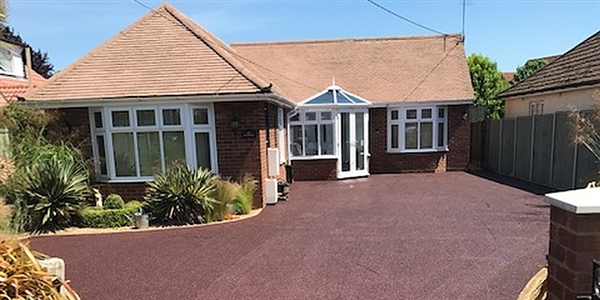At Booth Tarmacadam, we pride ourselves on delivering a professional and reliable surfacing service using only quality materials from our long-standing, reputable suppliers, to give you the right driveway solution for both your needs and budget.
When we install a tarmac driveway, we do so to exacting high standards, ensuring that it will serve you well over many years to come.
Call it a science, an art – or a bit of both – laying tarmac at the right thickness and density and with the right drainage to do its particular surfacing job properly requires a skilled team who really understands the materials they are working with.
Booth Tarmac Home Driveways Ipswich I Residential Surfacing
Booth Tarmacadam Driveways Ipswich I No obligation, sound, friendly advice
We’ve found that knowing a bit about the properties of tarmac, can help our customers understand how best to care for it too.
Tarmacadam (asphalt) is a combination of aggregate and bitumen – a bi-product from crude oil – and often includes additives like fibres, polymer and pigments to enhance its performance and durability. It was invented in the 1800s and is most commonly used for constructing roads and paths, car parks and driveways as well as play areas.
Tarmac is laid as a hot liquid, levelled and compacted. The bitumen is graded on stiffness, measured in penetration or ‘pen’ values.
High pen values are required for hand-laying surfaces such as paths, patiosand driveways as it is easier to handle.
Machine-led projects such as roadways involve tarmac with low pen values.
There are many factors to be taken into consideration to ensure that the right type of tarmac is installed for any specific job. It is not a one-type-fits all scenario.
Expected use, size, shape, gradient all contribute towards the amount of groundworks / site preparation and the exact make-up of the tarmac to be put down.
Non-permeable asphalt also requires the installation of adequate drainage. It’s a job for skilled and qualified surfacing contractors – like Booth Tarmacadam Ltd, determined to give contract surfacing a better name.
Booth Tarmacadam Driveways Ipswich I Sound, friendly advice
Although tarmac cools quickly, the particularly hard and resilient nature of this surfacing material is gained only over time. It is therefore really important to take special care when using any new tarmac surface during the first few days, weeks and 12 months of its life to prevent any damage.
Treat it right and a tarmac driveway from Booth Tarmacadam Ipswich will serve you well for many years to come. We don’t want to sound too prescriptive, but following these tips are really a must to help protect your investment.
If the weather is warm, it’s best to leave it longer still before driving on it. If you’re in any doubt about a tarmac driveway or paths installed by Booth Tarmacadam, please just give us a ring.
It’s worth noting that during the first year, your driveway will be at its most vulnerable to damage as it is at its weakest. The tarmac will harden and turn grey as it gets older.
Turning the wheel while the vehicle is stationary will cause scuff marks on the surface. Continue causing scuff marks in the same place and there is a potential for significant damage.
‘Point’ loads are things which put undue pressure on one particular spot – like the stand of a motorbike which takes the pressure off the tyres, but puts it through the small area of a metal foot. Other point loads might be the feet of caravans, or ladders.
If unavoidable, then the trick is to put a board under the feet / stand as this will spread the load and distribute the pressure across a wider area.
Oil and detergent can cause damage to the surface of your new tarmac driveway. If you have a spill no matter how big or small, please don’t just leave it.
Soak up any excess liquid immediately - sawdust, cat litter or dry sand all work well and can be easily disposed of through household waste.
If there is any residue, soak and scrub it with a solution of washing up liquid and water.
Booth Tarmacadam Driveways Ipswich I Great Products & Sound, Friendly Advice
